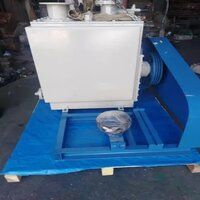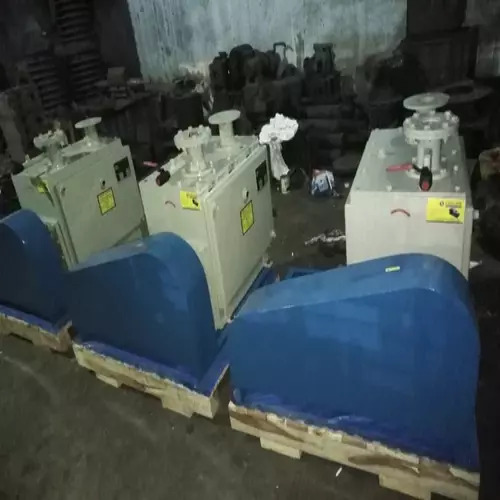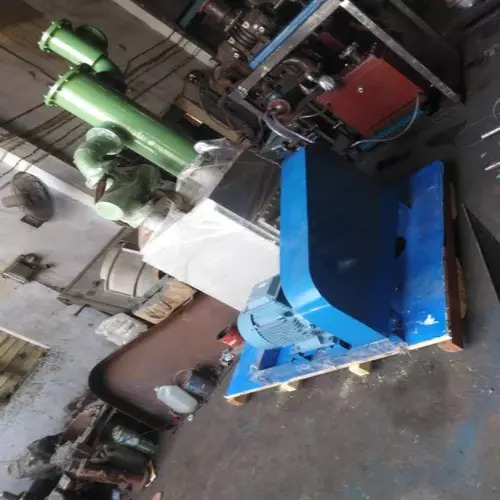Oil Seal Vacuum Pump
80000.00 INR/Piece
Product Details:
- Usage Industrial
- Material Other
- Processing Type Standard
- Condition New
- Power Mode Electric
- Voltage 220 Volt (v)
- Power Consumption 0.37 Kilowatt (kW)
- Click to View more
X
Oil Seal Vacuum Pump Price and Quantity
- 80000.00 INR/Piece
- 5 Unit
Oil Seal Vacuum Pump - Specification
- Standard
- Other
- 220 Volt (v)
- New
- 1400 r/min
- Industrial
- 0.37 Kilowatt (kW)
- Electric
Oil Seal Vacuum Pump Trade Information
- 10 Unit Per Day
- 4 Days
- Wooden Boxes
- All India
Product Description
Oil Seal Vacuum Pump is the one that uses oil as a sealing and lubricating medium. It has a rotating rotor with vanes for creating expanding and contracting volumes. The oil in the pump provides a seal, preventing air leakage, and also acts as a lubricant for the moving parts. This pump can achieve a wide vacuum range, making it versatile for several applications. Oil Seal Vacuum Pump has a compact and sturdy design known for its reliability and durability. It produces oil mist as a byproduct, requiring proper handling. We have gained high rising appreciation for its optimum performance and cost- effectiveness.
Specification of Oil Seal Vacuum Pump:
- Usage/Application: Industrial
- Phase: Single
- Brand: Leelam Industries
- Material: Aluminium
- Voltage: 220V
- Low Noise: 65 dB (A)
- Rotating Speed: 1400 r/min
- Motor Power: 0.37 kW
Features of Oil Seal Vacuum Pump:
- Rotary Vane Design
- Oil Sealing and Lubrication
- Wide Vacuum Range
- Compact and Versatile
- Reliability and Durability
- Cost-Effective
- Easy Maintenance
- Low Noise and Vibration
- Safety Features
- Application Specific Configurations
Frequently Asked Questions:
Q: What is an oil seal vacuum pump?
A: An oil seal vacuum pump is a type of vacuum pump that uses oil as both a sealing and lubricating medium. The oil in the pump creates a seal between the rotor and the pump housing to prevent air leakage and maintain the vacuum level.
Q: How does an oil seal vacuum pump work?
A: Oil seal vacuum pump works by rotating a series of vanes or blades inside a cylindrical chamber. As the blades rotate, they trap and compress air, which creates a partial vacuum. The oil seals prevent air from flowing back into the chamber in order to maintain the vacuum. This pump effectively generates a vacuum by removing gas from the system.
Q: What are the advantages of using an oil seal vacuum pump?
A: Oil seal vacuum pumps offer varied advantages, including:
- Wide Vacuum Range
- Efficient Sealing
- Lubrication
- Cost-Effective
- Compact Design
- Versatility
- Reliability and Durability
- Ease of Maintenance
- Familiar Technology
- Compatibility
Q: What are the limitations of oil seal vacuum pumps?
A: While oil seal vacuum pumps have their advantages, they also have some limitations as follows:
- Oil Contamination
- Maintenance and Oil Consumption
- Noise and Vibration
- Limited Vacuum Range
- Environmental Considerations
- Heat Generation
- Gas Compatibility
- Power Consumption
- Size and Weight
Q: How do I select the right oil for an oil seal vacuum pump?
A: Factors to consider while selecting an oil seal vacuum pump are as follow:
- Manufacturer Recommendations
- Pump Type and Operating Conditions
- Oil Viscosity
- Oil Composition
- Anti-wear and Anti-foam Properties
- Oil Change Intervals
- Oil Filtration and Maintenance
- Environmental Considerations
- Consult with Suppliers
Q: How often should I change the oil in an oil seal vacuum pump?
A: The frequency of oil changes depends on factors such as the pumps usage, manufacturer's recommendations, operating conditions, and the type of oil used. Generally, oil seal vacuum pumps require oil changes every three to six months.
Q: How can I maintain an oil seal vacuum pump?
A: Proper maintenance can help ensure optimum performance and longevity of an oil seal vacuum pump. Some maintenance tasks include:
- Follow Manufacturer's Guidelines
- Regular Oil Changes
- Oil Analysis
- Filter and Oil Separation
- Visual Inspection
- Lubrication
- Temperature Monitoring
- Maintenance Record Keeping
- Training and Expertise
- Manufacturer Support
Tell us about your requirement

Price:
Quantity
Select Unit
- 50
- 100
- 200
- 250
- 500
- 1000+
Additional detail
Mobile number
Email













 Call Me Free
Call Me Free
